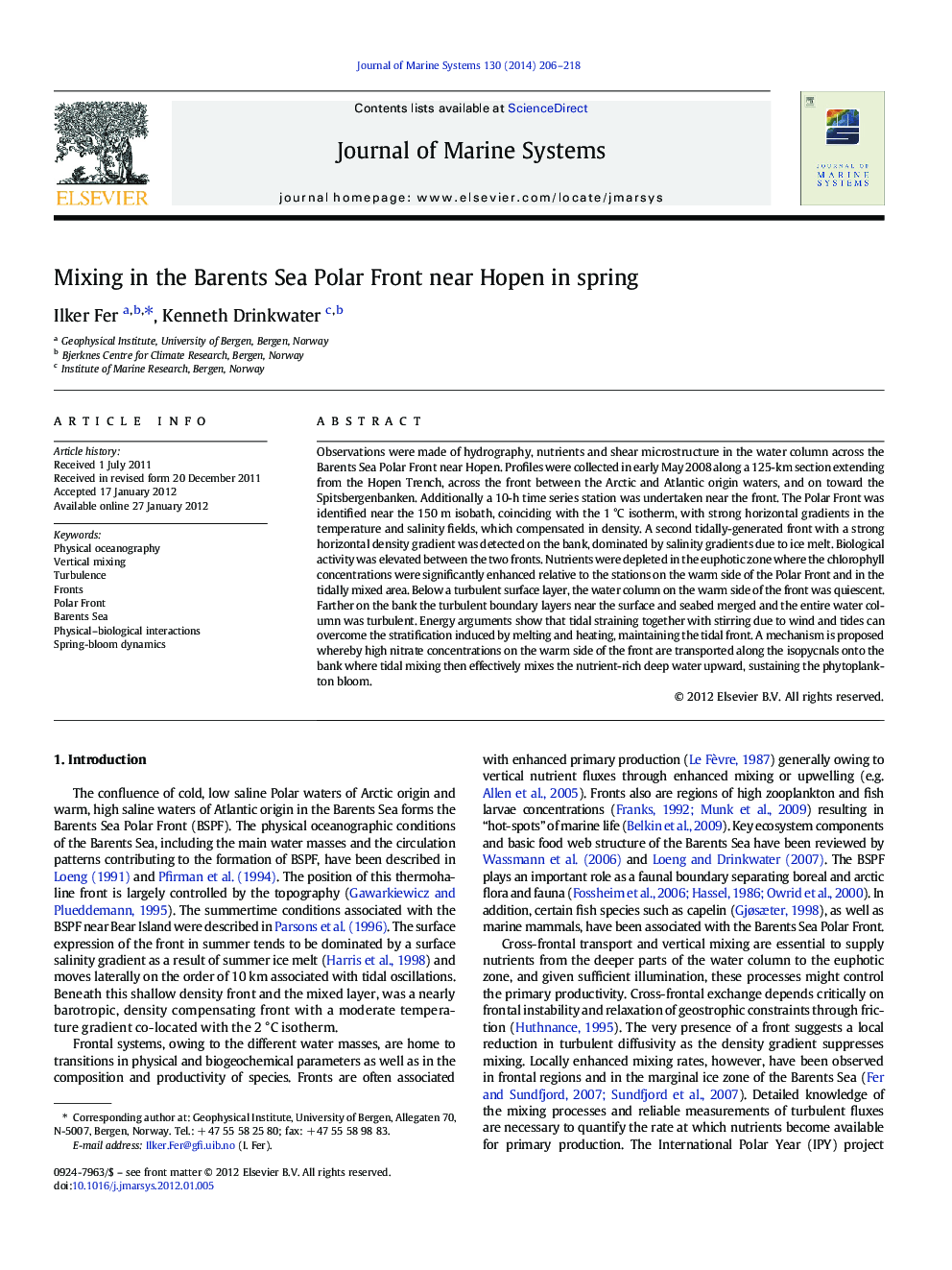| Article ID | Journal | Published Year | Pages | File Type |
|---|---|---|---|---|
| 6387067 | Journal of Marine Systems | 2014 | 13 Pages |
Abstract
Observations were made of hydrography, nutrients and shear microstructure in the water column across the Barents Sea Polar Front near Hopen. Profiles were collected in early May 2008 along a 125-km section extending from the Hopen Trench, across the front between the Arctic and Atlantic origin waters, and on toward the Spitsbergenbanken. Additionally a 10-h time series station was undertaken near the front. The Polar Front was identified near the 150 m isobath, coinciding with the 1 °C isotherm, with strong horizontal gradients in the temperature and salinity fields, which compensated in density. A second tidally-generated front with a strong horizontal density gradient was detected on the bank, dominated by salinity gradients due to ice melt. Biological activity was elevated between the two fronts. Nutrients were depleted in the euphotic zone where the chlorophyll concentrations were significantly enhanced relative to the stations on the warm side of the Polar Front and in the tidally mixed area. Below a turbulent surface layer, the water column on the warm side of the front was quiescent. Farther on the bank the turbulent boundary layers near the surface and seabed merged and the entire water column was turbulent. Energy arguments show that tidal straining together with stirring due to wind and tides can overcome the stratification induced by melting and heating, maintaining the tidal front. A mechanism is proposed whereby high nitrate concentrations on the warm side of the front are transported along the isopycnals onto the bank where tidal mixing then effectively mixes the nutrient-rich deep water upward, sustaining the phytoplankton bloom.
Keywords
Related Topics
Physical Sciences and Engineering
Earth and Planetary Sciences
Oceanography
Authors
Ilker Fer, Kenneth Drinkwater,
